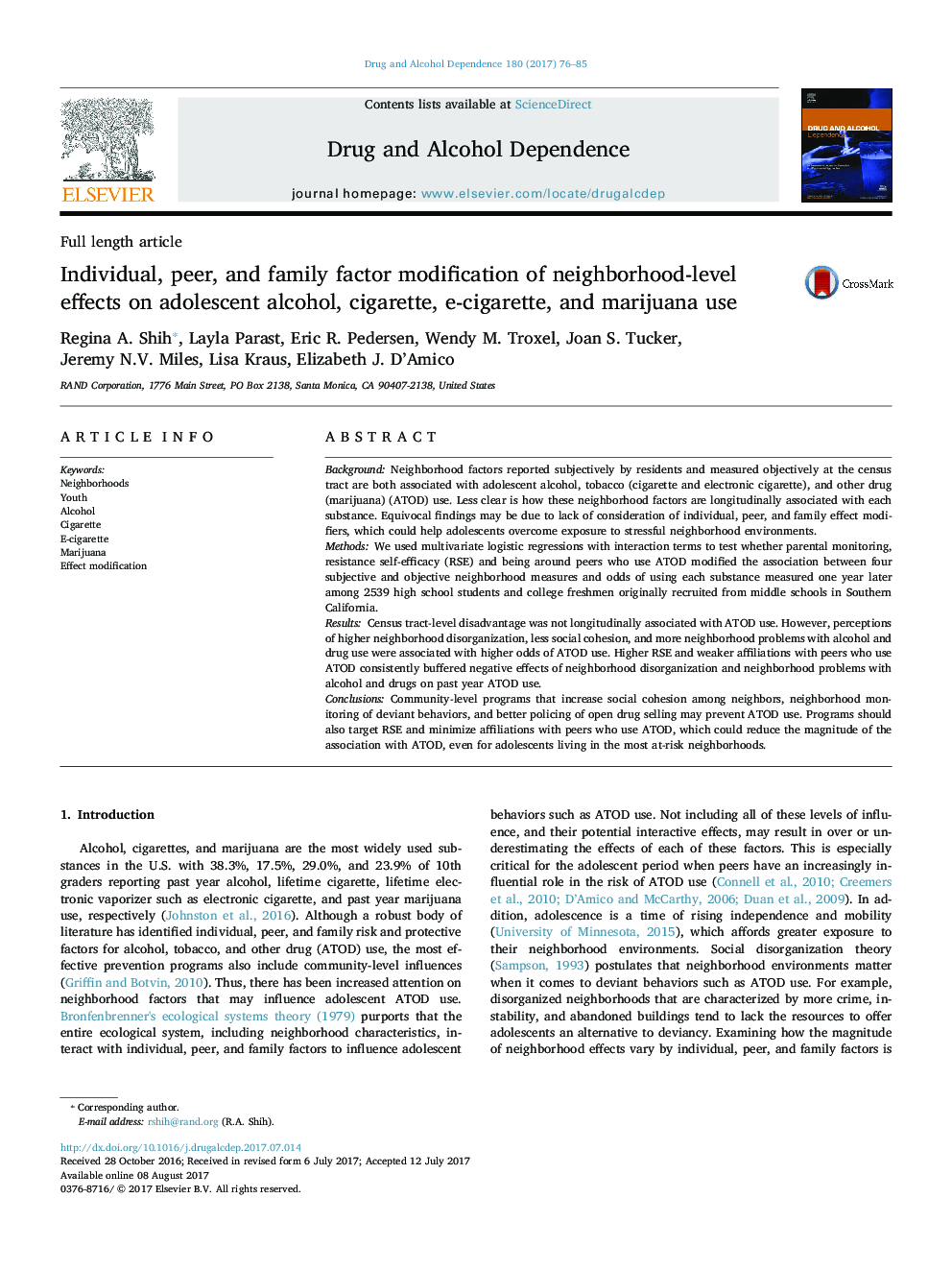| کد مقاله | کد نشریه | سال انتشار | مقاله انگلیسی | نسخه تمام متن |
|---|---|---|---|---|
| 5119848 | 1486111 | 2017 | 10 صفحه PDF | دانلود رایگان |
- Neighborhood alcohol/drug problems are associated with alcohol and marijuana use.
- Higher neighborhood disorganization is associated with higher odds of substance use.
- Parental monitoring did not modify effects of neighborhood quality.
- More affiliation with peers who use exacerbated poor quality neighborhood effects.
- Resistance self-efficacy may curb substance use for youth in unsafe neighborhood.
BackgroundNeighborhood factors reported subjectively by residents and measured objectively at the census tract are both associated with adolescent alcohol, tobacco (cigarette and electronic cigarette), and other drug (marijuana) (ATOD) use. Less clear is how these neighborhood factors are longitudinally associated with each substance. Equivocal findings may be due to lack of consideration of individual, peer, and family effect modifiers, which could help adolescents overcome exposure to stressful neighborhood environments.MethodsWe used multivariate logistic regressions with interaction terms to test whether parental monitoring, resistance self-efficacy (RSE) and being around peers who use ATOD modified the association between four subjective and objective neighborhood measures and odds of using each substance measured one year later among 2539 high school students and college freshmen originally recruited from middle schools in Southern California.ResultsCensus tract-level disadvantage was not longitudinally associated with ATOD use. However, perceptions of higher neighborhood disorganization, less social cohesion, and more neighborhood problems with alcohol and drug use were associated with higher odds of ATOD use. Higher RSE and weaker affiliations with peers who use ATOD consistently buffered negative effects of neighborhood disorganization and neighborhood problems with alcohol and drugs on past year ATOD use.ConclusionsCommunity-level programs that increase social cohesion among neighbors, neighborhood monitoring of deviant behaviors, and better policing of open drug selling may prevent ATOD use. Programs should also target RSE and minimize affiliations with peers who use ATOD, which could reduce the magnitude of the association with ATOD, even for adolescents living in the most at-risk neighborhoods.
Journal: Drug and Alcohol Dependence - Volume 180, 1 November 2017, Pages 76-85
